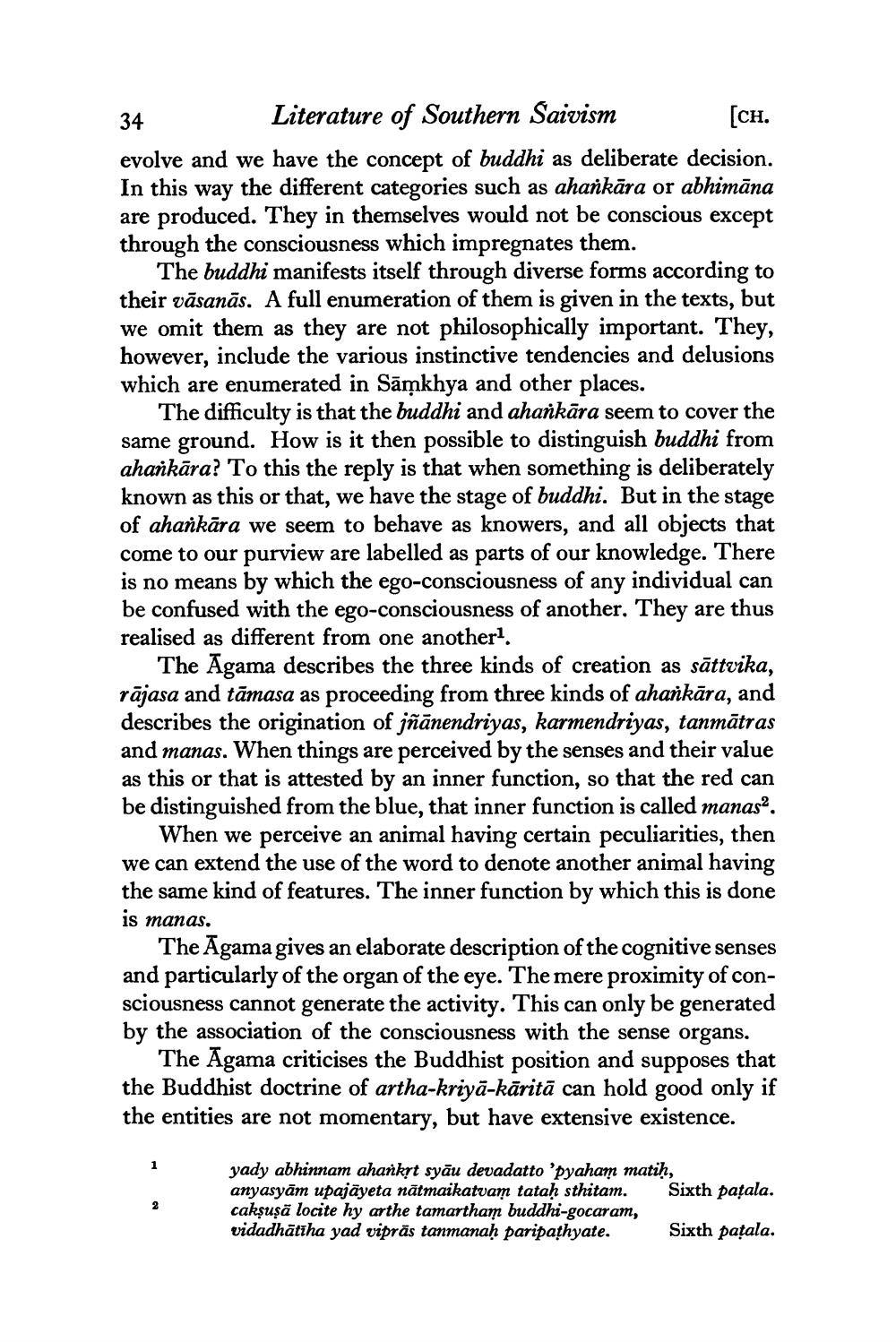________________
34
Literature of Southern Saivism [CH. evolve and we have the concept of buddhi as deliberate decision. In this way the different categories such as ahankāra or abhimāna are produced. They in themselves would not be conscious except through the consciousness which impregnates them.
The buddhi manifests itself through diverse forms according to their vāsanās. A full enumeration of them is given in the texts, but we omit them as they are not philosophically important. They, however, include the various instinctive tendencies and delusions which are enumerated in Sāmkhya and other places.
The difficulty is that the buddhi and ahankāra seem to cover the same ground. How is it then possible to distinguish buddhi from ahankāra? To this the reply is that when something is deliberately known as this or that, we have the stage of buddhi. But in the stage of ahankāra we seem to behave as knowers, and all objects that come to our purview are labelled as parts of our knowledge. There is no means by which the ego-consciousness of any individual can be confused with the ego-consciousness of another. They are thus realised as different from one another.
The Agama describes the three kinds of creation as sāttvika, rājasa and tāmasa as proceeding from three kinds of ahaňkāra, and describes the origination of jñānendriyas, karmendriyas, tanmātras and manas. When things are perceived by the senses and their value as this or that is attested by an inner function, so that the red can be distinguished from the blue, that inner function is called manas.
When we perceive an animal having certain peculiarities, then we can extend the use of the word to denote another animal having the same kind of features. The inner function by which this is done is manas.
The Agama gives an elaborate description of the cognitive senses and particularly of the organ of the eye. The mere proximity of consciousness cannot generate the activity. This can only be generated by the association of the consciousness with the sense organs.
The Agama criticises the Buddhist position and supposes that the Buddhist doctrine of artha-kriyā-kāritā can hold good only if the entities are not momentary, but have extensive existence.
yady abhinnam ahankst syāu devadatto 'pyaham matih, anyasyām upajāyeta nātmaikatvam tataḥ sthitam. Sixth patala. cakşuşā locite hy arthe tamartham buddhi-gocaram, vidadhātīha yad viprās tanmanaḥ paripathyate. Sixth patala.




